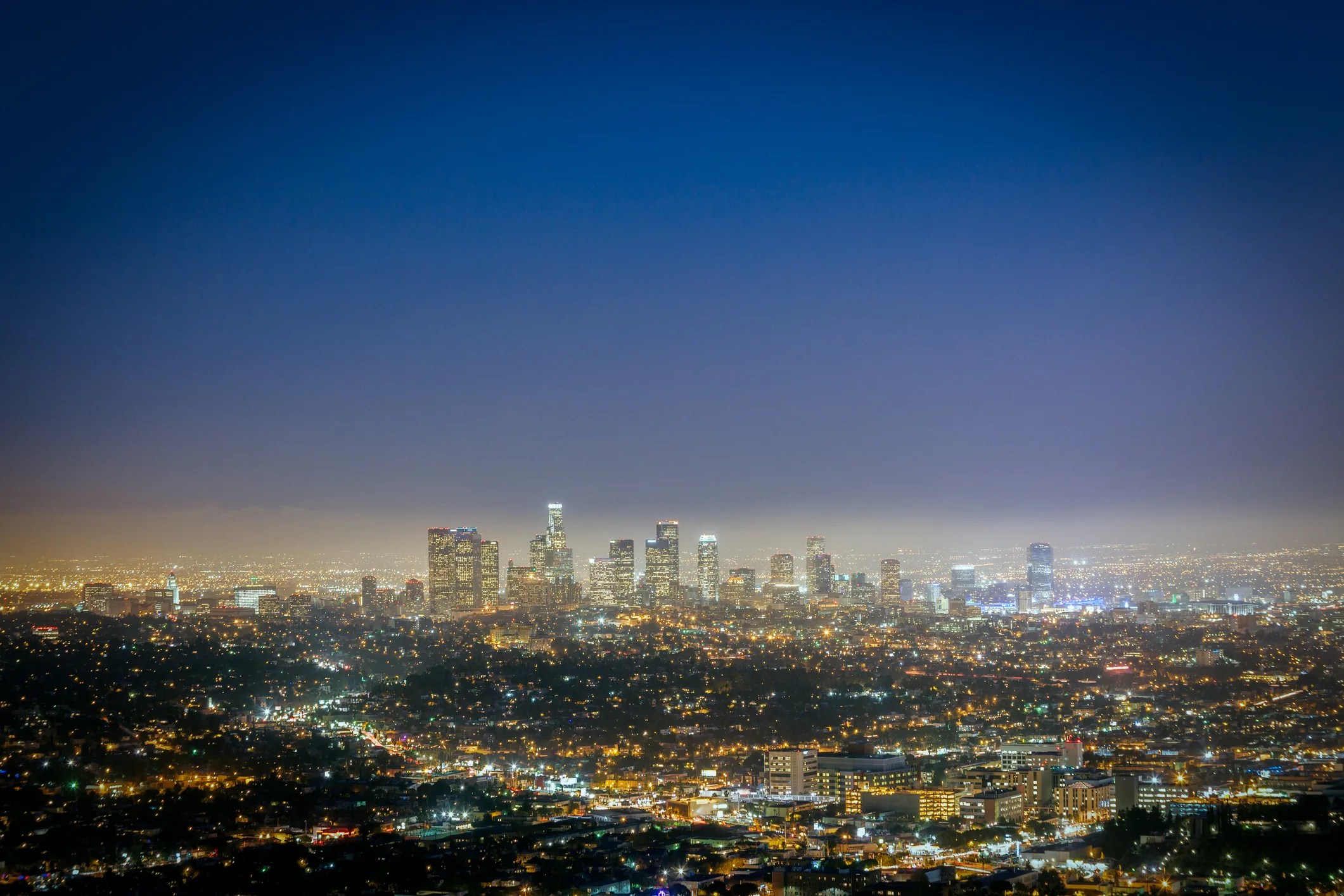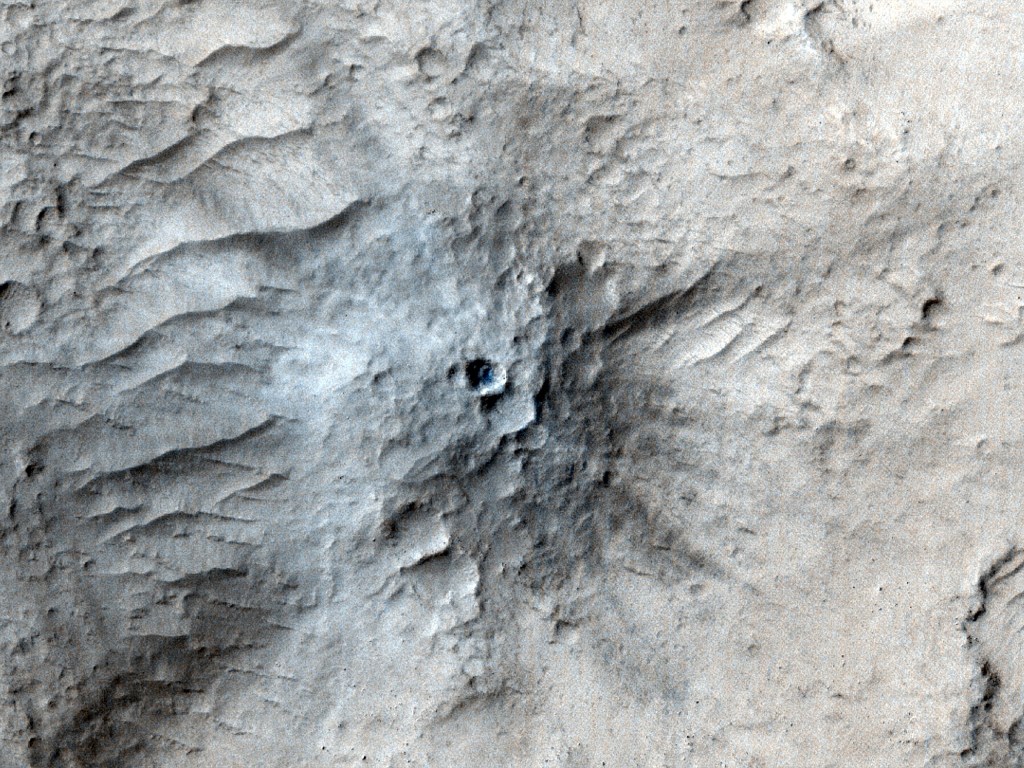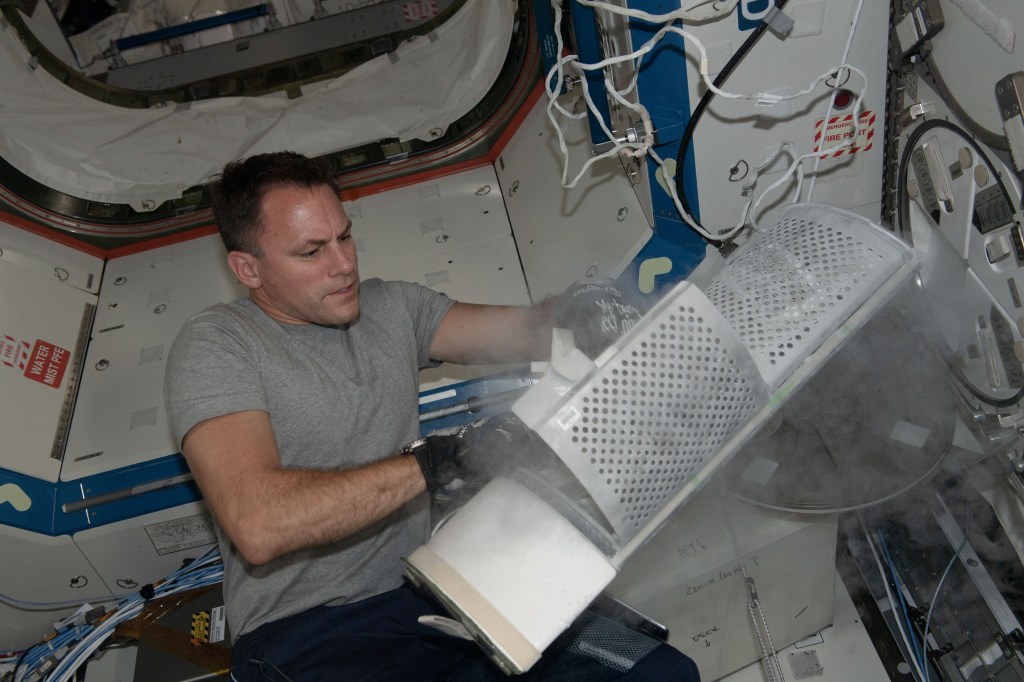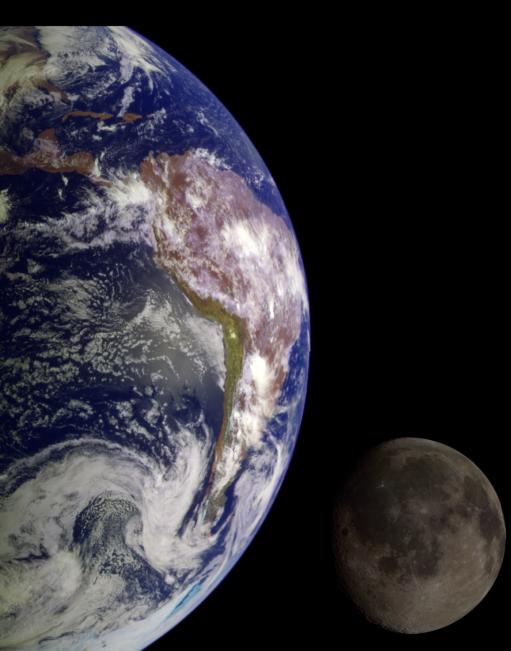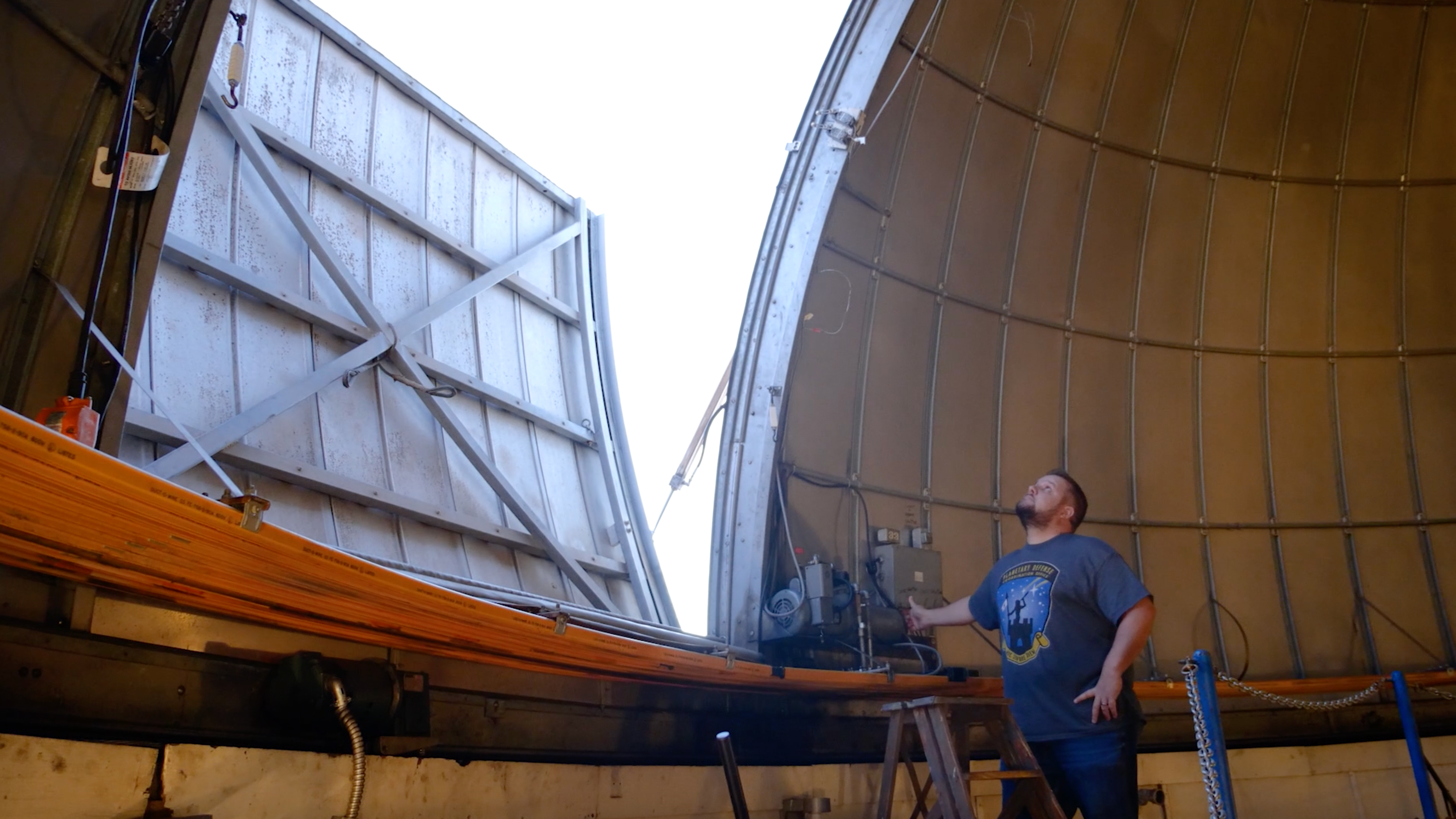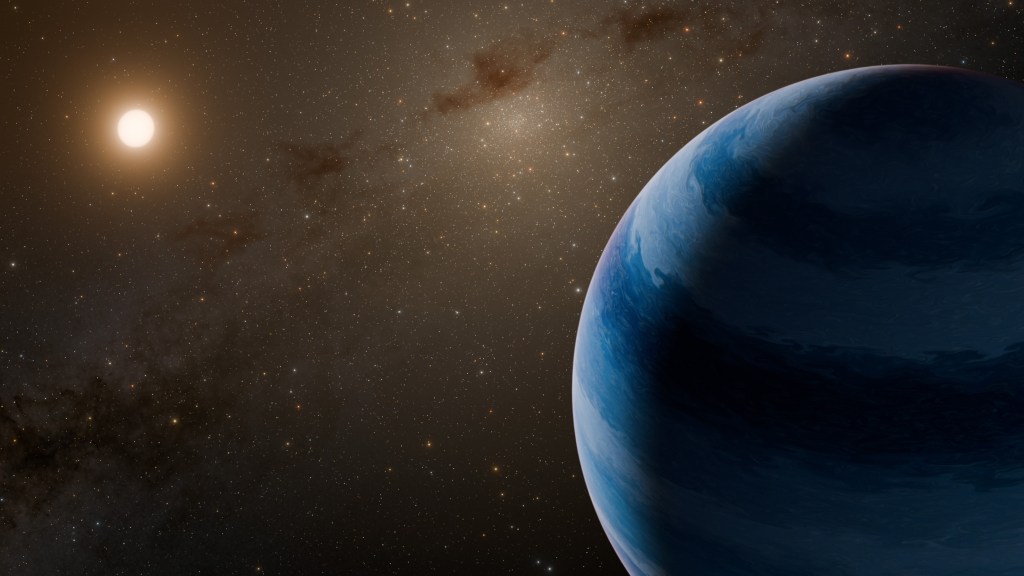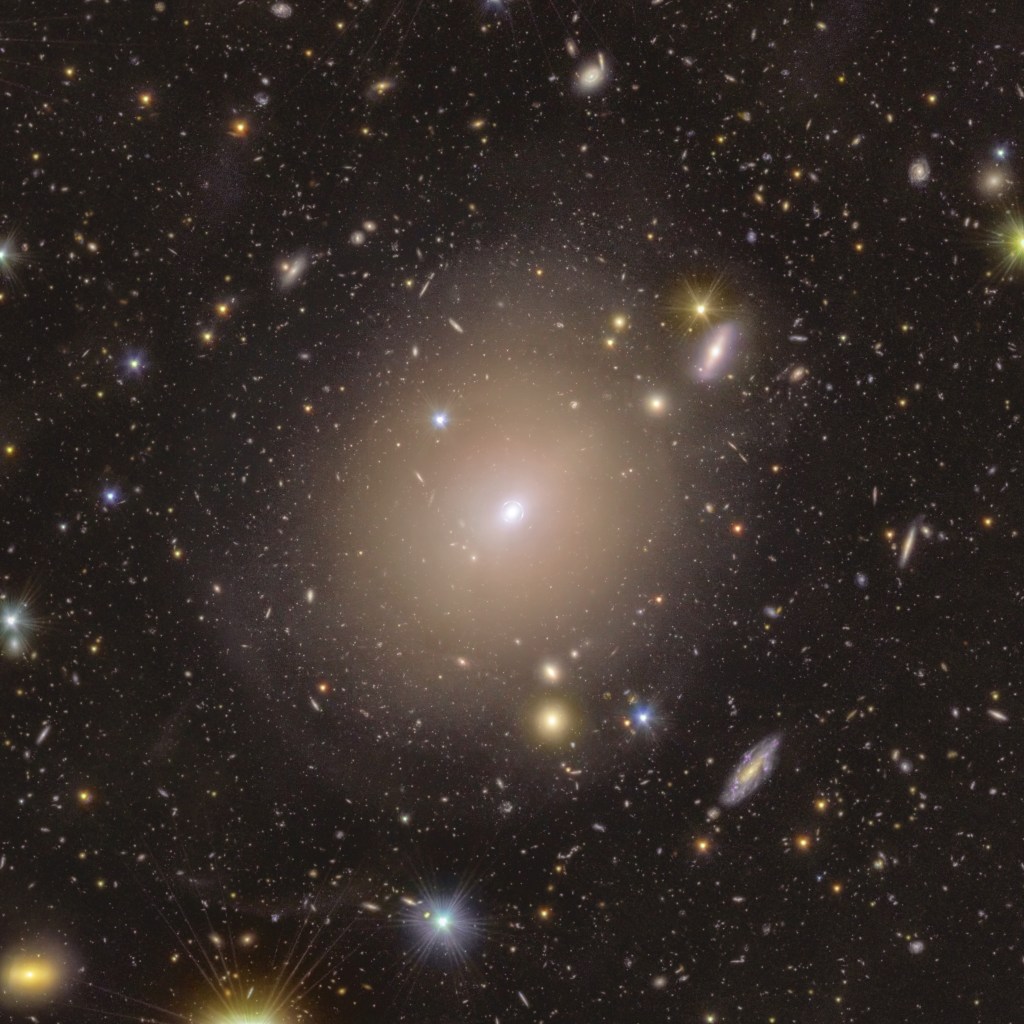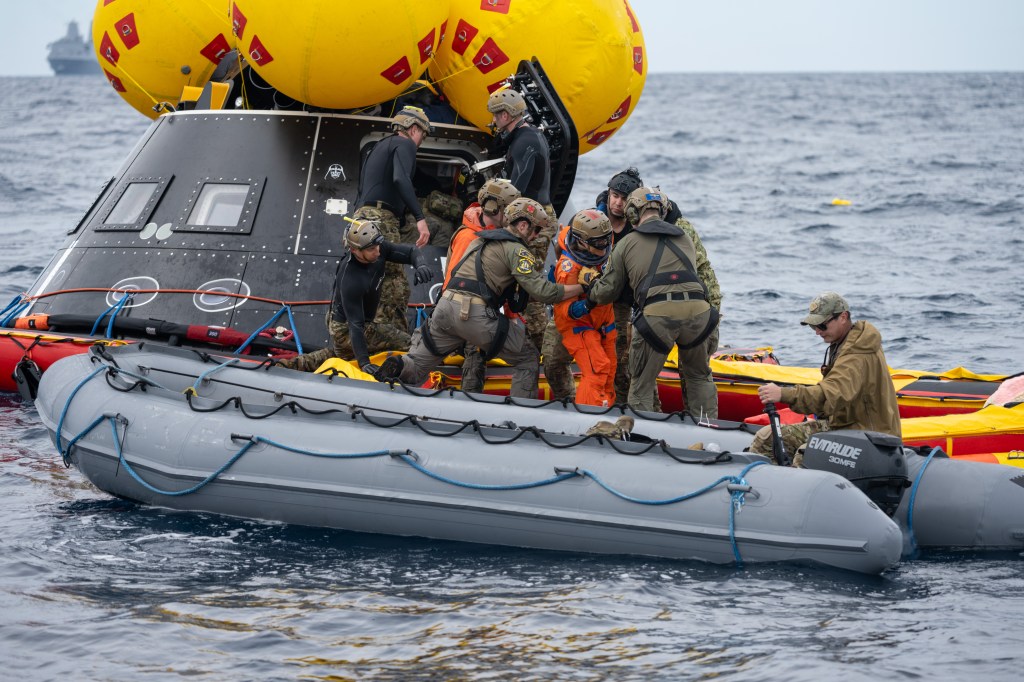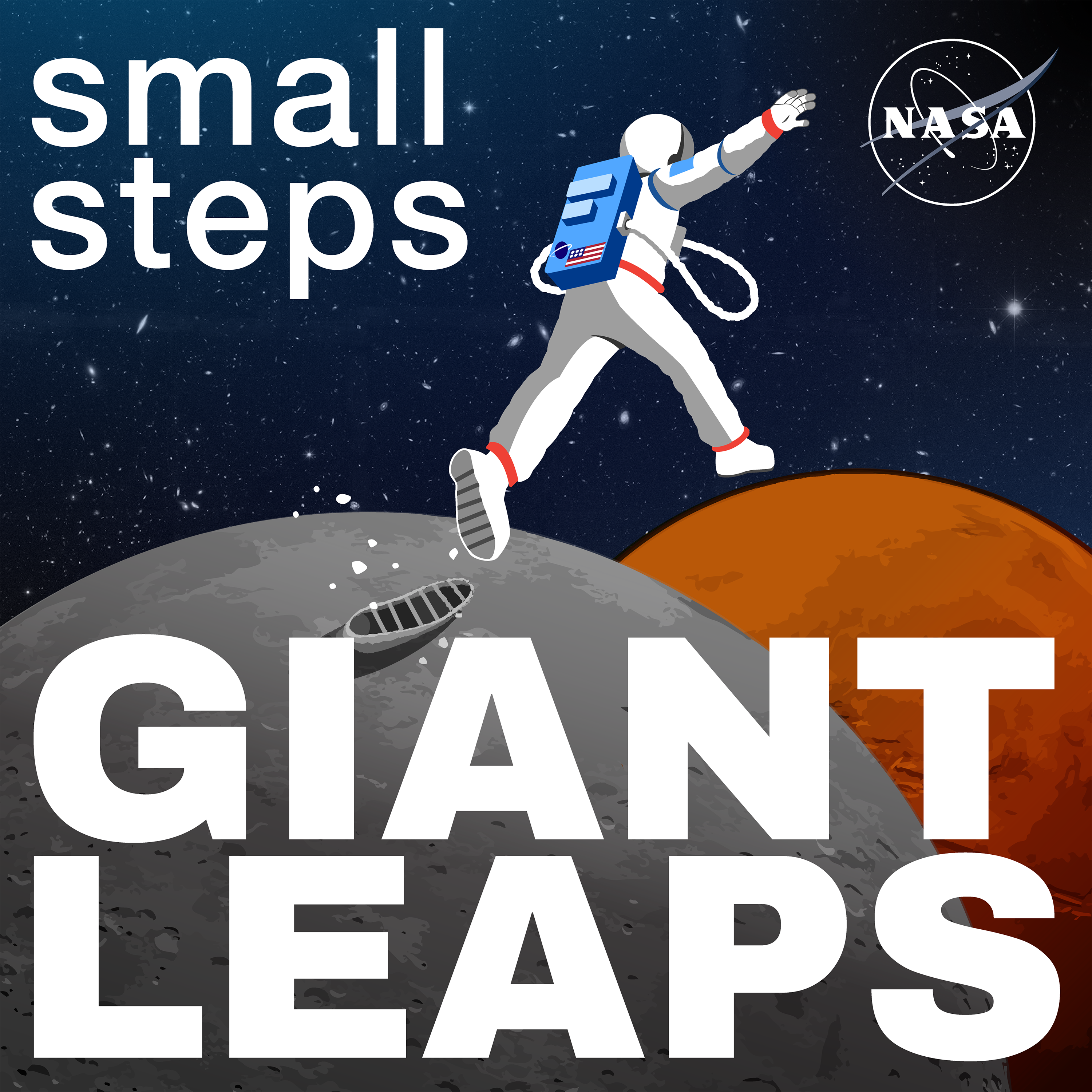NASA Astronaut Candidate Woody Hoburg discusses his experiences as the 2017 NASA Astronaut Class approaches the two-year mark of extensive training for space travel.
Woody Hoburg: Opportunities like this don’t come around often, getting to work on something this big.
I want the United States to land the first woman on the Moon.
I just can’t imagine a more exciting time to be involved in human spaceflight than right now.
Everybody comes in with their own background. People come in having been pilots or having been scientists, having been engineers, but nobody comes in having spent time in a spacesuit.
Deana Nunley (Host): You’re listening to Small Steps, Giant Leaps – a NASA APPEL Knowledge Services podcast featuring interviews and stories, tapping into project experiences in order to unravel lessons learned, identify best practices and discover novel ideas.
I’m Deana Nunley.
When NASA opened applications for the 2017 astronaut class, a record-breaking 18,000 people answered the call to join the exciting future of space exploration. Now, after two years spent learning the basics of space travel, 11 women and men are nearing the completion of their astronaut candidate training. They will then be eligible for assignment to any of a variety of missions, ranging from research on the International Space Station to deep space missions.
Woody Hoburg is a member of the 2017 astronaut class and is our guest today on the podcast. He came to NASA from MIT, where he led a research group as an assistant professor of Aeronautics and Astronautics.
Host: Woody, thank you so much for joining us on the podcast.
Woody Hoburg: It’s great to be here. Thanks for having me.
Host: What are the primary areas of emphasis in your astronaut class training?
Hoburg: Our training is really broad. So, in the two years that we’ve been here, since we started here at NASA, we’ve been working on ISS systems. We do a mastery, where we’re in the mockups in Building 9 here at JSC, so the Space Vehicle Mockup Facility. We have to know all of the systems and subsystems on the International Space Station as well as be ready to respond to cautions and warnings and emergencies. So, that’s one thing.
We do Russian language training. I have recently been doing a fair amount of robotics training, so learning to fly the Canadarm. Then we do T-38 flight training. We’ve done some geology. We actually did a field course out in New Mexico a year ago, and we’re getting ready in about a month here to go out to Arizona for another field course in geology.
We do EVA training in the Neutral Buoyancy Lab, and then a variety of other training flows. We do some survival training. We do some leadership training. There’s a maintenance flow for ISS. Now, as we get toward the end of our training, we’re starting to do some follow-on trainings that aren’t part of the formal initial candidate syllabus, but now that we’re getting close to finishing up, we’re getting to get some additional nice-to-have training.
Host: You mentioned leadership training and I want to follow up on that. So, leadership and followship skills seem to become especially crucial, when you talk about applying them during human space exploration missions. How has your view of these skills evolved since you started training?
Hoburg: That’s a great question. I think my view of those has evolved a lot and it will, I would imagine, continue to evolve. I think probably the biggest thing I would say between leadership and followship is I’ve recognized more than ever the interplay between those two. Here in the Astronaut Office, we often switch back and forth between being leaders and being followers, for example, in job assignments. So, it’s very common that I might be working for my classmate at one moment, and then a year later we switch roles and she’s working for me.
So, we need to be ready to be either a leader or a follower, and switch easily back and forth. I think I will always be a student of learning to be a better leader and also a better follower, but I think that success in a team relies on everyone believing in each other and wanting the team to succeed. Therefore, if you’re in the role of a follower, just knowing that the actions and decisions you make as a follower may be just as important or even more so than those of the leader.
Host: Do you want to give us any specific examples of some of the exercises that you’ve been through or some of the training discussions that you’ve had?
Hoburg: We do a number of sort of – I guess you’d call it formal leadership training. We had an opportunity as a class to go out and do NOLS, which is the National Outdoor Leadership School. That was a great opportunity to spend about a week and a half out in Utah, camping together and experiencing leadership opportunities, and also getting some great coaching from people that do that, that coach leaders for a living.
So, that was really great training, I think both because I was with my close friends, who I already knew well, and I think it allowed us to get to know each other even better, and also learn our little tendencies and quirks as leaders and followers. I also really benefitted from the individualized coaching, just people getting to know me and zero in on things that my personality may just struggle with or things that might not be bad necessarily, but that I can improve on through focused training.
Host: What have you learned about teamwork that would help in long-duration missions?
Hoburg: I think I’m really lucky to have my classmates. In the two years I’ve been here, I’ve become incredibly close with the rest of my class that was selected at the same time. We get to know each other really well. One of the things I realize is just that everybody is such an incredible human being and such a good team player. We all believe in each other and want one another to succeed.
So, when I think about teamwork, I think what I’ve learned is the little things that I need to do to take it to the next level. So, for me, for example, I’m fairly introverted. I think before I came here, I thought that maybe teamwork meant putting up with little things that bother me, but I will just kind of not complain, for example, or allow someone to have it their way, and I’ll just be adaptable and flexible.
That’s worked pretty well for me. That’s kind of my natural inclination when I’m on a team, is to just defer to other people’s preferences, for example. But as I’ve tried to sort of take that to the next level with a really tight-knit team that I’m perhaps going to be in a long-duration mission with, what I’ve learned is little things like the value of communication and catching early on little annoyances I might have, and just being open with people about my feelings. As an introvert, that’s kind of an area that I need to focus on.
For everyone, it’s different, but I think on a long-duration mission, what’s really key is that there are going to be issues that come up. There are going to be tensions. There is going to be conflict. So, being able to surface that early and trust that everyone on the team wants to move past those things, I think that’s just incredibly important.
Host: What are some of the highlights of your training so far?
Hoburg: The training so far has been amazing. Two years through the training flow and we’ve just seen so many different things in our training. I think two that stand out for me are the EVA training and the flying. So, the EVA training we do here at Johnson in the Neutral Buoyancy Lab. Everybody comes in with their own background. People come in having been pilots or having been scientists, having been engineers, but nobody comes in having spent time in a spacesuit. So, it’s new for everyone.
It’s just so much fun to go out there and get in the spacesuit for the first time, and go underwater, and spend time practicing EVA skills on the mockup of the International Space Station, underwater there. It’s challenging. It’s humbling. It’s physically demanding. It’s mentally demanding, but it’s also just incredibly rewarding to improve over time at those skills.
It’s also just incredible the team out there. I mean the entire Neutral Buoyancy Lab, the team of divers out there that work all day, every day, keeping us neutrally buoyant and handing off tools to us, I mean they’re just incredible. So, that whole facility, all built around getting people ready to go do EVAs in space, it’s just a really amazing, positive experience being out there.
Then I also mentioned the flying. It’s been just truly incredible to get to fly around in a T-38 and improve my aviation skills, and get better at something that – I came in with flying being a hobby of mine, and it’s something I’ve always been aiming to improve over the years, even before I came to NASA. So, now, doing that in a really focused way in the T-38 has been incredibly valuable and rewarding.
Host: How would you describe the level of excitement within the astronaut class as NASA prepares to return to the Moon?
Hoburg: I would say there’s a high level of excitement. It’s pretty amazing. When we came here, we did our interviews when we first got selected, and we said things like, “Well, there’s no better time to be involved. We have Commercial Crew. We have all these different vehicles we might fly on. We have Orion.”
But, actually, if you remember, only two years ago, we knew we were going to go out deeper into the solar system than we ever had before. But then to have the announcement during our training that we’re actually going back to the surface, and now we’re going to do it by 2024, that’s just truly incredible. I can’t emphasize enough. I just can’t imagine a more exciting time to be involved in human spaceflight than right now.
I would also say we need to remain focused, with all this excitement about the Moon, on the International Space Station. I think people sometimes don’t realize that we have astronauts in orbit 24/7/365 on the ISS. I think it’s a testament to the success of the International Space Station Program that your average American is not excited or particularly interested in the fact that we have people on the space station. It’s become routine.
So, I think it’s just amazing that we’ve gotten to this place that people think it’s a routine thing that we would have astronauts spending six months in space on the International Space Station. So, I think as we ramp up our efforts to go back to the Moon, we just need to remain focused on staying safe on ISS, continuing those missions, continuing the incredibly valuable science that’s happening there.
One of my favorite things when I bring people to visit Johnson Space Center is walking into Mission Control because I think there’s this moment when you walk into Mission Control where you realize this is happening right now. We have people in space, and we have a team down here commanding and controlling the vehicle and talking to our astronauts on orbit. It kind of takes your breath away to walk into Mission Control and realize how real it is.
But back to your original question about the Moon, I definitely – it’s super-exciting and I think sometime in the not-too-distant future, the first woman is going to land on the Moon. I hope it’s an American. I’m really excited. Maybe it will be one of my classmates. I can’t wait.
Host: What are some of the new technologies that capture your attention?
Hoburg: When I think about technologies, ultimately, some day we really want to go to Mars. So when I think about – you know, we’re going back to the Moon. Why are we doing that? I think a big reason that we’re going back to the Moon is as a proving ground to eventually get to Mars, and that for me means proving out key technologies. So, an example of that is using the resources of another planet or heavenly body as part of the mission.
We now know that there’s water ice on the Moon. That is an incredibly valuable resource. You add energy to that, which you can get from the sun, and you can make rocket fuel. You can make water. You can make oxygen. So, that’s incredibly valuable, but it’s something that we haven’t done before as a critical part of a human spaceflight mission.
So, by way of analogy, I would compare that to the re-gen life support system on the International Space Station. What do I mean? So, we drink our own pee on the International Space Station, right. There’s a urine processing system that filters out the urine. It’s also our sweat. That all gets filtered down and becomes clean drinking water that we drink on ISS. That’s an incredible system. It’s over 90 percent efficient. So, it dramatically reduces the amount of water that we need to fly up to space station.
20 years ago, that was an unproven technology. It was something that we as NASA human spaceflight weren’t necessarily fully comfortable with, using for real on a mission, but now we are. We’re comfortable with that. We’ve proven that out for over a decade on the space station, and we now can regenerate water out of urine. So, it’s an amazing technology.
So, I think we need to do similar things if we’re going to get to Mars. We need to slowly get comfortable with the key technologies like pulling resources out of the ground, using water ice to create fuel/oxygen/water on the Moon. There are many other examples, but that’s just going to be a key part of eventually getting to Mars.
Host: Why did you want to be an astronaut?
Hoburg: I’m always confused when I’m asked why I want to be an astronaut. To me, it’s kind of obvious. I think it’s a dream for many people. It’s a unique life experience certainly, to say the least, even to get to do what I’ve done in my initial two years of training, let alone to eventually get to fly in space.
I mean for me, specifically, I think it combines two categories of passions that I’ve had throughout my life, which are technical and operational passions. So, I’ve always been drawn to engineering, because I like solving technical problems. I like math. I like software. I like solving problems. I like pulling apart things, understanding how they work, and then creating solutions. So, that’s the technical side of me.
But I’ve also always had this sort of draw to operational things. I used to work search and rescue. I’ve been a pilot for many years. I just enjoy training and becoming ready to go out on a mission. So, I think the astronaut job is one of many that I could do, but it’s certainly an honor to get to be in this role and combine those passions that I’ve always had.
Host: You mentioned being a pilot and having wilderness search and rescue experience. Could you share some of those experiences?
Hoburg: Sure. I got into search and rescue actually through rock climbing. I’ve been a rock climber for many years. I started doing it a lot in college, and I was always drawn to going out to Yosemite, and drawn by the massive granite cliffs out in Yosemite.
I learned about sort of an elite search and rescue team called Yosemite Search and Rescue in college. I kind of said, “Wow, that’s a really amazing job. I would love to do that.” I actually kind of went and did it.
I got my EMT certification. I became an EMT. I had already been climbing a lot, so I was ready for learning the technical rope side of rescue out there. I served for a few seasons on the Yosemite Search and Rescue team while I was in grad school. So, it’s a seasonal position. I was doing grad school and computer science at UC Berkeley, and I was spending summers out in Yosemite doing search and rescue.
Luckily, my research at the time was mostly software development. So, I was able to – it was very portable. I could work on my laptop and do my grad school research while sitting in the SAR cache and awaiting any calls, and then going out on those calls when they came in.
It was one of those things I had just always wanted to do that. Going and doing search and rescue is not necessarily what people would think of as advancing your academic career. I was working on my Ph.D. at the time. I mean there were a lot of people that said, “You’re crazy. What are you doing? This is a distraction from what you really need to be doing.” But for me, it was just obvious that I wanted to go do that, and I made it work.
It involved a fair amount of crazy commuting back and forth between Berkeley and Yosemite in September, when classes started. There was a small overlap there, but I was lucky to have an incredibly supportive advisor and just made it happen because I wanted to do it. So, those are some of my most cherished memories.
It was actually being on that 10-person search and rescue team was not too dissimilar from being a member of the astronaut class now, in that we just have a super tight-knit team, a small group of people that work really well together. So, that was kind of my first exposure to that type of team setting.
Host: So perhaps those experiences have helped prepare you to be an astronaut.
Hoburg: Yeah, I certainly think so.
Host: Were there times that you were feeling that sense of adventure or sense of danger when you were working search and rescue?
Hoburg: Yeah. I think, hopefully, I was well trained. You don’t ever want to feel a sense of danger when you’re off on a search and rescue mission. It should, hopefully, be boring and executed in a way that doesn’t put anyone in danger.
But at a high level, speaking more broadly, I absolutely felt a sense of adventure. I was in grad school at the time and I was working on software development, but I also had this side hobby of wanting to go off and be a rock climber, and search and rescue allowed me to turn that hobby into something a little more operational and that had a little more impact, which I found to be valuable and rewarding. So, it was a very formative experience for me.
I don’t think at the time that I had any idea that it would someday lead to, for example, being at NASA. It was just something that I wanted to do and was passionate about. But I do think that it sort of helped shape my development.
I also volunteered on a team in the Bay area for many years, and that was incredibly rewarding as well. I’m actually also volunteering for a search and rescue team out here in Texas currently. So, it’s been a passion for a long time for me and I really enjoy doing it.
Host: Wow. That is really interesting. You mentioned earlier the Artemis Program. You talked about space station. And I just want to ask you, with all the excitement around the Artemis Program, Commercial Crew, almost 20 years of permanent human presence on the International Space Station, how special is it to you to be part of this astronaut class?
Hoburg: It’s incredibly special. As I mentioned earlier, I really can’t imagine a more exciting time to be working on human spaceflight. I really mean that broadly, even beyond our class. It’s incredibly humbling and special to be a member of this astronaut class, but I also think it’s just humbling and special to be working for NASA right now as we go back to the Moon.
I remember in college. I was a young engineer. I remember this moment of sort of feeling a bit sad that I didn’t get to work on Apollo. It just felt like, “Wow, if there was a time to be an engineer, it was back when we were going to the Moon.”
I just think now I can work on the next generation of spaceflight, going back to the Moon, and we’re doing it differently now than Apollo. We’re going to go back sustainably. We’re going to learn so much more. We’re going to set up a permanent presence, a sustainable presence there, and we’re going to use it as a proving ground to go to Mars.
So, we’re not just doing it again. We’re not just repeating. I really do feel that we’re solving new challenges. We’re doing something truly bold. As an engineer, I’m just super excited about this opportunity. Opportunities like this don’t come around often, getting to work on something this big. So, we need more engineers to make this happen and it’s going to be really exciting. It’s super special.
Host: And, Woody, with all that in mind, what lasting contribution would you like to make to the exploration of space and humanity’s accomplishments among the stars?
Hoburg: Well, I actually think I’m replaceable. There’s a lot of people. I met them during the interview process. There’s a lot of people that could easily do the job I’m doing now. So, I’m incredibly lucky and humble to be in the position I’m in and to get to participate in the way that I’ll get to participate. But I’m replaceable in what I’m doing. It’s everyone involved. It’s the engineers. It’s the software developers. It’s the machinists. It’s everyone involved in this effort that’s going to make the lasting contribution. So, we’re going to do it together as a team.
As I said earlier, I want the United States to land the first woman on the Moon. I want to make this happen, and it’s going to be a very large team effort to make this happen. So, I’d just say let’s get after it and get it done.
Host: Many thanks to Woody Hoburg for joining us today on the podcast. You can learn more about NASA missions, the 2017 astronaut class, and other topics mentioned on today’s show via links on our website at APPEL.NASA.gov/podcast.
We invite you to take a moment and subscribe to the podcast, and tell your friends and colleagues about Small Steps, Giant Leaps.
Thanks for listening.



